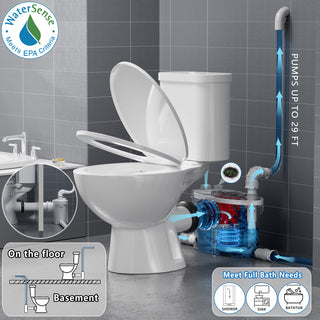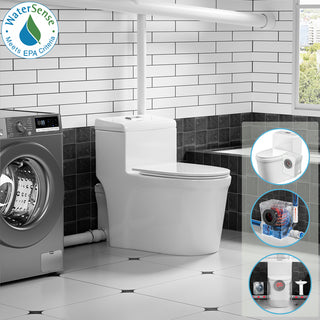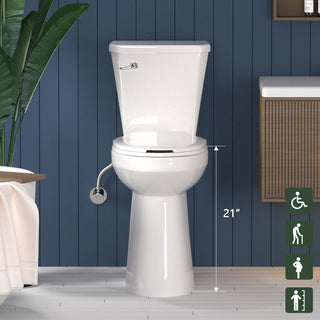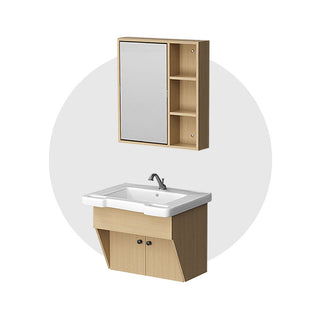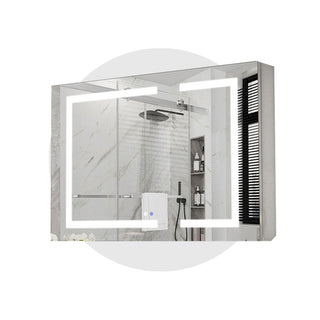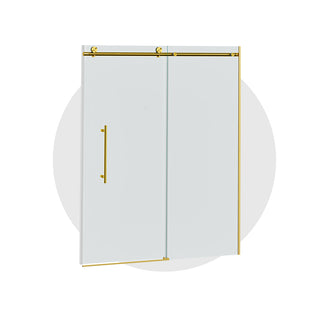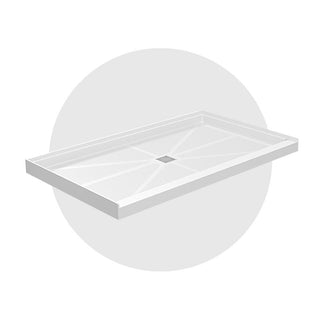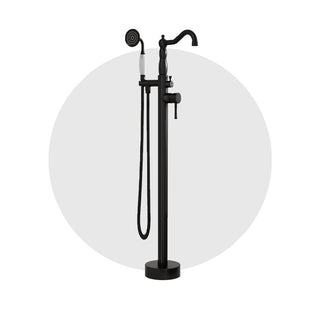If you've ever shopped for a toilet and noticed the term trapway in the specs—or seen phrases like “fully glazed trapway” or “skirted trapway”—you might be wondering: what exactly does it mean, and why should you care?
In this guide, we’ll break down what a toilet trapway is, what it does, and how it affects your toilet’s performance, cleaning, and design.
I. What Is a Toilet Trapway?
The trapway is the curved channel inside the toilet that carries waste from the bowl to the drainpipe. It starts from the hole at the bottom of the bowl and curves upward before turning downward to connect with your home’s plumbing.
That upward curve isn’t just random—it’s intentional. It holds standing water in the bowl, which acts as a barrier to block sewer gases from coming up into your bathroom.
🔍 Quick facts:
- Also called the trap or S-trap (due to its shape)
- Usually located behind or underneath the toilet bowl
- Varies in width, finish, and visibility
II. Where Is the Trapway Located?
You may not always see the trapway directly—depending on the toilet design.

- Exposed trapway: The trap channel is visible on the outside of the toilet bowl (usually curved)
- Concealed or skirted trapway: The sides are fully enclosed for a sleeker look and easier cleaning
In both cases, the trapway itself performs the same function—only the appearance and ease of maintenance change.
III. What Does the Trapway Do?
Here’s what makes the trapway a key part of your toilet’s operation:
✅ Maintains the water seal
The water trapped inside blocks odors and sewer gases from rising up into your bathroom.
✅ Supports waste removal
The size and finish of the trapway determine how smoothly waste exits during a flush. A wider, fully glazed trapway can help prevent clogs.
✅ Affects flushing power
Along with the flush valve and tank pressure, the trapway’s design contributes to how efficiently your toilet clears the bowl.
IV. Types of Toilet Trapways
Toilets come with a few different trapway styles:
|
Type |
Description |
Key Benefit |
| Exposed | Visible curves on the outside of bowl | Easier for DIY repairs |
| Concealed | Outer walls hide the trap shape | Sleeker appearance |
|
Skirted |
Fully enclosed, smooth-sided design |
Modern look, easy to clean |
V. Glazed vs Non-Glazed Trapway
You may also notice some toilets advertise a fully glazed trapway. This refers to the internal surface being coated with smooth porcelain glaze—just like the outer bowl.

- Fully glazed: Reduces friction, improves waste flow, and resists buildup
- Non-glazed or partially glazed: More prone to trapping debris and clogs over time
💡 Most modern toilets now feature a fully glazed trapway—but it’s always worth checking the specs. Learn more about What Is a Fully Glazed Trapway.
VI. Trapway Size: Does It Matter?
Yes, but we’ll cover that in more detail in a dedicated article. For now, know that:
- Standard trapway diameter is about 2" to 2⅜"
- Larger trapways (like 3" or 4") are found in premium models for added flushing performance
- Size, glaze, and flush type together determine overall effectiveness
👉 Learn more: Does Trapway Size Matter for a Toilet?
Conclusion: Small Detail, Big Role
Though often overlooked, the trapway plays a crucial role in how your toilet performs every day. From maintaining a proper water seal to supporting strong, clog-free flushing, this internal passage is key to both hygiene and efficiency. Whether you’re focused on reliable performance or easy cleaning, understanding the trapway helps you make a better toilet choice.
FAQ: Toilet Trapway Basics
Q: What is a toilet trapway?
It’s the internal curved passage that directs waste from the bowl into the drain while maintaining a water seal to block odors.
Q: Can I see the trapway?
Yes, on exposed trapway toilets. On skirted or concealed models, the trapway is hidden inside the structure.
Q: What’s the difference between glazed and non-glazed trapways?
A glazed trapway has a smooth, coated finish that improves waste flow and reduces clogs. It’s a sign of better quality.
Q: Does the trapway affect flushing power?
Yes. Its size, shape, and finish all influence how well waste exits during a flush.
Q: Is the trapway the same as the P-trap under a sink?
They work similarly—both trap water to prevent sewer gas—but the toilet’s trapway is built into the bowl itself.


